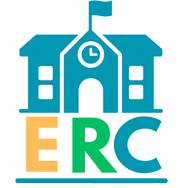Double Gut Punch
Revenue planning for EdTech businesses is more challenging than ever. The many uncertainties facing our industry today bring new difficulties and new opportunities.
STRATEGYREVENUE PLANNINGMARKET INSIGHTS
John Kline
3/23/20255 min read


Revenue planning is a post-DOE world. It's a slightly longer post, but it has TIPS!
We waited anxiously for the end of ESSER funds. We are trying our best to understand its impact on our business. Then Wham! The fed is thrown into complete chaos when it comes to education. Double Gut Punch. Now we have:
Uncertainty around funding sources
A looming lack of data and research that informs many aspects of our revenue strategies
Continued disconnect between boards and administrations
A crisis of Morale in an already challenged and politicized industry
High stakes for edtech businesses to understand and navigate risk
Need for education companies to operate lean as inflation raises all operating costs
So, what changes do we make in our revenue planning process? How does our business weather this storm?
Current State of Affairs
Federal Funding: Although the future of federal funding is uncertain, existing grants and programs remain in place until further notice. States and districts are currently receiving funds as allocated in previous budgets. And experts believe that the funding will, for the most part, remain but will be administered by a different agency. Yes, other agencies are also being transformed through massive layoffs, shutdowns, and sharp 180-degree turns regarding their role and mission. So if the DOE is gone, but Title and other funds they administered (and Congress approved) remain available, and we cannot be certain that other agencies will be resourced enough to handle the distribution, what do we do? Until mid-term elections come in 2026 and offer a more direct way to impact policy, edtech companies (and school districts) must plan conservatively. That means having difficult conversations with your boards and executive leadership.
"If you have private equity overlords - get on this fast as they will (rightly so, given the investments they made) scrutinize every aspect of your business before they accept that today's market factors play an outsized but very real part in revenue planning."
💡⚡️Tips:
Understand, and more importantly, communicate to your organization - especially those at the top - that market factors cannot be ignored in revenue planning for this and the next couple of cycles. Most companies in edtech do not consider the funding environment and larger market factors nearly as much as they should.
To reduce risk, deduct the federal dollars from your revenue plan. On average, that is roughly 10% of a district's budget, but it can be much higher. You operate a business in this space, so it's your job to break this down, given the nature of the products/services you offer and what are your ideal client profiles.
Consider hiring a third party with expertise in education business, like ERC. Consulting is a less costly way to leverage deep experience and solve challenging business problems.
State and Local Responses
State Initiatives: Many states are already preparing to fill the gap left by reduced federal involvement. This includes increasing state education budgets and exploring new funding mechanisms. However, as is always the case with education funding in the United States, where you live plays a huge role.
Local Funding Efforts: Local districts will likely seek additional funding through property taxes, bonds, and levies to support their schools. See above - where you live matters, as attitudes about important things change dramatically from region to region, such as...
What is / what should be the role of education
Same as above, but considering attitudes toward public and private education
The attitude (and tolerance for) taxation
💡⚡️Tips:
Plan your revenue by knowing your state and local funding sources and initiatives. It's A LOT of work, but it saves you from wasting time with districts without funds. A product or service's perceived or proven value always influences a district's purchasing decision. Tread carefully! Many edtech companies talk about moving from being a "nice to have" to becoming "a must-have." Uh-huh. This is a whole topic for a future blog post.
Invest in and leverage the tools that help companies identify opportunities in the public space. Such as GovSpend and Burbio.
Public-Private Partnerships (leverage CTE connections)
Increased Collaboration: There is a growing trend of public-private partnerships to support education. Companies, nonprofits, and philanthropic organizations are stepping in to provide resources and support. This area will likely grow as companies' hiring challenges become more acute. Many companies already see how this problem connects to education. Forward-thinking school districts with strong CTE programs are already ramping up industry partnerships in creative and mutually beneficial ways. CTE programs often have directors and teachers from the private sector, so this is a natural mindset.
💡⚡️Tips:
Businesses: Consider how your products/services can bring real value to career education programs in our schools. CTE is a growth area.
Districts: Invest in CTE. And expose learners during the primary grades. There are many signals that students, families, communities, and industries desire strong career programs in their schools.
Focus on Equity
Equity Concerns: There is a heightened focus on ensuring that disadvantaged and underserved students continue to receive support. Or not. States and local districts are exploring ways to maintain programs that address equity. Given the politicization of this topic, this is a double-edged sword. The way to approach this topic will mean different things if you are in or selling to a district that supports this administration's position on DEI or if you are in or selling to a district that promotes DEI.
💡⚡️Tips:
Do what is best for children. Culture Wars aside, there are some things that we can all agree are better for kids. It might seem like there isn't much agreement these days - but it is our responsibility to find that common ground and build from there.
If you, as a business serving education, take a position on this issue, do your diligence on its effect on how you plan revenue for the next few cycles.
Community Engagement
Community Involvement: Increased community involvement is expected as local stakeholders take a more active role in supporting their schools. This ties into issues around equity, CTE, and other things that have to do with what is happening in school buildings when it comes to content.
💡⚡️Tips:
Remember the point about common ground? Assume community interest in what is happening in our schools is a net positive. Yes, there is profound disagreement, but there is also common ground. Start there.
From a revenue planning perspective, understanding a district means understanding the community/communities it serves and how the community and district interact. Understanding that will influence product features, marketing campaigns, sales tactics, etc.
Ongoing Trends, Programs, and Standards
There is an expression: some things never change. That is an overstatement, but there are some longer-term trends to track when planning revenue growth in education. Some of these may have been interrupted by COVID, but they still hold:
Existing Programs: Programs and existing standards, such as Common Core and state-specific initiatives, will continue to guide curriculum and instruction. These things move slowly, and with funding in question, they are likely to move even slower.
Teacher Support: Efforts to support teachers through professional development and resources remain a priority at the state and local levels. Where the funding comes from remains to be seen, but take the time to understand precisely this question as you plan.
EdTech Adoption: The adoption of educational technology continues to grow, with states and districts investing in digital tools to enhance learning. During COVID, schools reached a high point with 1:1 computing. That fueled the purchase of applications and other technologies to support digital teaching and learning. This is a long-running trend going back decades. While we have reached a high mark for access to tech, the tech itself is constantly changing (AI?).
💡⚡️Tips:
Changes in district curriculum planning and materials/tech adoption present opportunities for businesses
Excellent instruction is closely linked to the statement, "Do what's best for kids." That means excellent teachers. Again, there is an opportunity here as the solution to this challenging problem is fluid.
Edtech usually follows broader tech innovations that occur outside of education. So, keep your eyes on innovation in general.
Consulting
edtech and non-profit revenue operations and front line consulting
